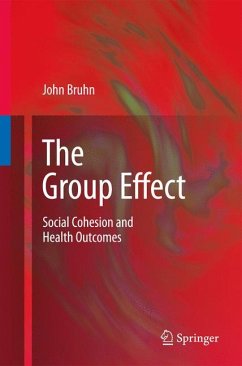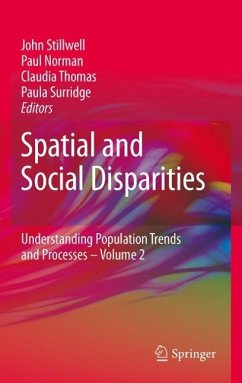
The Group Effect (eBook, PDF)
Social Cohesion and Health Outcomes
Versandkostenfrei!
Sofort per Download lieferbar
72,95 €
inkl. MwSt.
Weitere Ausgaben:

PAYBACK Punkte
36 °P sammeln!
Sociologists and anthropologists have had a long interest in studying the ways in which cultures shaped different patterns of health, disease, and mortality. Social scientists have documented low rates of chronic disease and disability in non-Western societies and have suggested that social stability, cultural homogeneity and social cohesion may play a part in explaining these low rates. On the other hand, in studies of Western societies, social scientists have found that disease and mortality assume different patterns among various ethnic, cultural and social-economic groups. The role of stre...
Sociologists and anthropologists have had a long interest in studying the ways in which cultures shaped different patterns of health, disease, and mortality. Social scientists have documented low rates of chronic disease and disability in non-Western societies and have suggested that social stability, cultural homogeneity and social cohesion may play a part in explaining these low rates. On the other hand, in studies of Western societies, social scientists have found that disease and mortality assume different patterns among various ethnic, cultural and social-economic groups. The role of stress, social change and a low degree of cohesion have been suggested, along with other factors as contributing to the variable rates among different social groups.
Social cohesion has been implicated in the cause and recovery from both physical and psychological illnesses. Although there has been a large amount of work established the beneficial effects of cohesion on health and well-being, relatively little work has focused on HOW increased social cohesion sustains or improves health. This work is based on the premise that there are risk factors, including social cohesion that regulate health and disease in groups. One of the challenges is how to measure social cohesion - it can be readily observed and experienced but difficult to quantify. A better understanding of how social cohesion works will be valuable to improving group-level interventions.
Social cohesion has been implicated in the cause and recovery from both physical and psychological illnesses. Although there has been a large amount of work established the beneficial effects of cohesion on health and well-being, relatively little work has focused on HOW increased social cohesion sustains or improves health. This work is based on the premise that there are risk factors, including social cohesion that regulate health and disease in groups. One of the challenges is how to measure social cohesion - it can be readily observed and experienced but difficult to quantify. A better understanding of how social cohesion works will be valuable to improving group-level interventions.
Dieser Download kann aus rechtlichen Gründen nur mit Rechnungsadresse in A, B, BG, CY, CZ, D, DK, EW, E, FIN, F, GR, HR, H, IRL, I, LT, L, LR, M, NL, PL, P, R, S, SLO, SK ausgeliefert werden.













